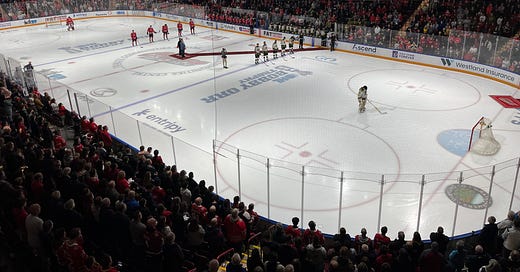Is a reckoning coming for junior hockey?
American courts have forced major changes to the way athletes in sports like football and basketball are treated and compensated. Hockey could be next
On successive days last month I drove to Oshawa, for an OHL playoff game between the Generals and the North Bay Battalion, and then up to North Bay for the next game in the series.
Major-junior hockey sometimes feels like one of the last “pure” sports, where the athletes aren’t making tens of millions of dollars, the ticket prices are reasonable and the fans aren’t at the arena to schmooze clients but to cheer loudly for the hometown team. In a place like North Bay, four hours north of Toronto and awfully quiet on a pre-summer evening, it’s not a stretch to say it’s the only game in town. Unless you count Fanny’s, the strip joint a few blocks from the arena.
But junior hockey might well be facing forces that will change it forever. A decade ago, I covered a lawsuit filed in an Ontario court that sought to force the Canadian Hockey League to properly compensate its players. It was the first attempt to break up a system that has long had critics: Players are drafted by major-junior teams at 16 years old, and that team holds their rights for up to five seasons. They don’t get paid, but get a monthly stipend of a few hundred dollars, and if they have to leave home to join their team they live with a billet family. It’s the price you pay for pursuing a professional hockey career, even if it seems a little inequitable.
The ground, though, has shifted. The junior hockey system has always been a little similar to the way other North American sports develop future pros. Football and basketball players went through the NCAA system, playing before packed houses for zero compensation. Baseball players toiled in the minor leagues, making far less than minimum wage.
But the courts have changed a lot of that. NCAA athletes can now sign lucrative endorsement deals. and minor-league baseball players successfully formed a union and last year signed a collective bargaining agreement. The CHL has become more of an outlier. And in February, an antitrust lawsuit was filed in New York that seeks to break up the junior-hockey system completely.
I spoke to one of the lawyers involved for what became a long reported piece, and they are quite confident of success. I’m no expert on American antitrust law, but the lawyers are certain that the present junior-hockey system violates it.
“The NHL and the three major junior leagues have said, ‘These players are our property and we’re going to agree on rules about how we can use that property to maximize our own interest, without any consideration that these are kids or that these kids are providing us with their labour,’” lawyer Ethan Litwin told me. “They’re making agreements among themselves as the most powerful entities in North American hockey, and they are going to control how everything works. You can’t do that under antitrust laws.”
It is worth nothing that it was an antitrust case that forced the NCAA to break up its long-standing instance on amateurism. Just last week, the NCAA reached a settlement in a related case which means that schools will now pay athletes directly, which will make the contrast that much greater between the treatment of aspiring professionals in most sports and those who are drafted by a CHL team.
We’ll see where all this goes, and it might take some time. But I’d be surprised if major changes to the junior-hockey system aren’t on the way. The whole story is here. It is, as mentioned, a long one.




